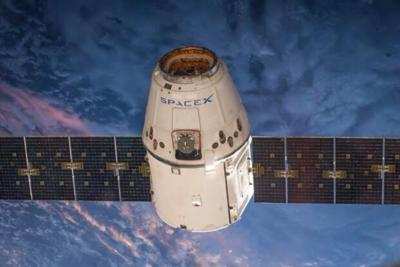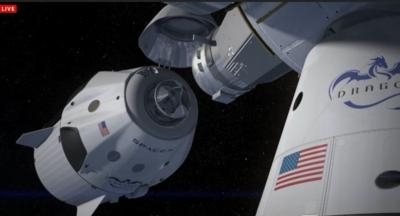Certification Baseline Review Outlines Manufacturing Plans For Crewed Dragon Spacecraft
NASA has approved the completion of SpaceX’s first milestone in the company’s path toward launching crews to the International Space Station (ISS) from U.S. soil under a Commercial Crew Transportation Capability (CCtCap) contract with the agency.

During the Certification Baseline Review, SpaceX described its current design baseline including how the company plans to manufacture its Crew Dragon spacecraft and Falcon 9 v.1.1 rocket, then launch, fly, land and recover the crew. The company also outlined how it will achieve NASA certification of its system to enable transport of crews to and from the space station.
“This milestone sets the pace for the rigorous work ahead as SpaceX meets the certification requirements outlined in our contract,” said Kathy Lueders, manager of NASA’s Commercial Crew Program. “It is very exciting to see SpaceX's proposed path to certification, including a flight test phase and completion of the system development.”
On Sept. 16, the agency unveiled its selection of SpaceX and Boeing to transport U.S. crews to and from the space station using their Crew Dragon and CST-100 spacecraft, respectively. These contracts will end the nation’s sole reliance on Russia and allow the station’s current crew of six to increase, enabling more research aboard the unique microgravity laboratory.
Under the CCtCap contracts, the companies will complete NASA certification of their human space transportation systems, including a crewed flight test with at least one NASA astronaut aboard, to verify the fully integrated rocket and spacecraft system can launch from the United States, maneuver in orbit, and dock to the space station, and validate its systems perform as expected.
Throughout the next few years, SpaceX will test its systems, materials and concept of operations to the limits to prove they are safe to transport astronauts to the station. Once certified, the Crew Dragon spacecraft and Falcon 9 v1.1 rocket will be processed and integrated inside a new hangar before being rolled out for launch. This will all take place at the historic Launch Complex 39A at NASA’s Kennedy Space Center in Florida.

The Crew Dragon is expected to be able to dock to the station for up to 210 days and serve as a 24-hour safe haven during an emergency in space.
“SpaceX designed the Dragon spacecraft with the ultimate goal of transporting people to space,” said Gwynne Shotwell, SpaceX President and Chief Operating Officer. “Successful completion of the Certification Baseline Review represents a critical step in that effort—we applaud our team’s hard work to date and look forward to helping NASA return the transport of U.S. astronauts to American soil.”
By expanding the station crew size and enabling private companies to handle launches to low-Earth orbit -- a region NASA has been visiting since 1962 -- the nation's space agency can focus on getting the most research and experience out of America's investment in ISS. NASA also can expand its focus to develop the Space Launch System and Orion capsule for missions in the proving ground of deep space beyond the moon to advance the skills and techniques that will enable humans to explore Mars.
(Images from file. Top: Uncrewed Dragon spacecraft. Bottom: Artists' rendering of Dragon V2)
 ANN's Daily Aero-Term (05.07.25): Terminal Radar Service Area
ANN's Daily Aero-Term (05.07.25): Terminal Radar Service Area ANN's Daily Aero-Linx (05.07.25)
ANN's Daily Aero-Linx (05.07.25) Classic Aero-TV: Anousheh Ansari -- The Woman Behind The Prize
Classic Aero-TV: Anousheh Ansari -- The Woman Behind The Prize NTSB Prelim: Bell 206B
NTSB Prelim: Bell 206B Airborne-NextGen 05.06.25: AF Uncrewed Fighters, Drones v Planes, Joby Crew Test
Airborne-NextGen 05.06.25: AF Uncrewed Fighters, Drones v Planes, Joby Crew Test




